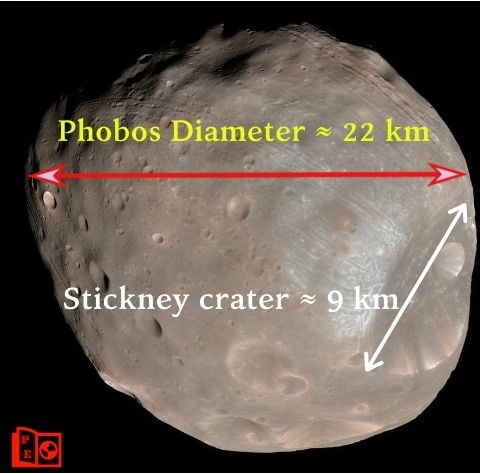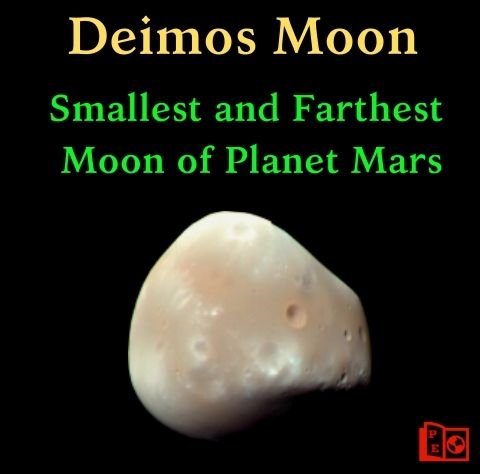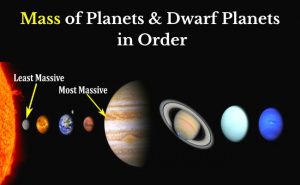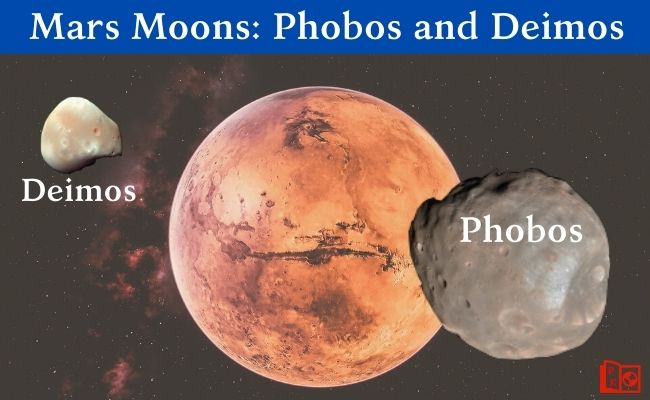Mars is the only terrestrial planet that has more than one natural satellite. There are two moons of Mars; Phobos and Deimos. Both Mars Moons were discovered by an American astronomer Asaph Hall within a week in August 1877.
There is an interesting story about discovering the Mars moons: After the discovery of Jupiter’s Galilean Moons, Scientists guessed about the existence of other planets’ moons including Martian moons.
So, many astronomers started to discover moons of the planet Mars. Asaph Hall also started his search at the United States Naval Observatory in Washington D.C. When he was about to give up his research in August 1877, his wife Angelina encouraged him to carry on. And on the very next night on 12 August 1877, he discovered Deimos and also found Phobos after six nights on 18 August 1877.
This is how the two moons of Mars (Phobos and Deimos) were discovered by our scientists.
You must be willing to know more about interesting facts about the Mars moons, keep reading. (Also Read:- Planet Mars Unique Facts)
Interesting facts about Mars Moons
Before the discovery of Mars moons, scientists had found few moons of all giant planets in our solar system. It means astronomers already had discovered a few Jupiter moons, Saturn moons, Uranus moons, and Neptune moons before 1877.
Also Read:
- Number of Jupiter Moons with interesting facts
- Saturn Number of Moons with interesting facts
- Uranus Number of Moons with interesting facts
- Number of Neptune Moons with interesting facts
# How were the mars moons named?
According to Roman Mythology, Planet Mars was named after the god of war, Ares. Ares had two twins son: Phobos and Deimos.
In Greek Mythology, Phobos means fear and panic. Whereas Deimos means terror and dread. So the mars moons were named after Ares’s two sons, Phobos and Deimos.
# Mars Moons vs Earth’s Moon
The 2 moons of Mars are quite small while comparing the size of our Earth’s moon. The diameter of the Phobos is around 22.23 km (13.8 mi), whereas the diameter of Deimos is around 12.56 km (7.8 mi).
Here in this table, we have added more characteristics of Martian moons compared to Earth’s moon.
| Characteristics | Phobos | Deimos | Earth’s Moon |
| Mean Radius | 11.20 km | 6.25 km | 1737.5 km |
| Mass | 1.07×1016 kg | 1.5×1015 kg | 7.3×1022 kg |
| Mean Density | 1.87 g/cm3 | 1.47 g/cm3 | 3.34 g/cm3 |
| Orbital Distance | 9376 km | 23460 km | 384400 km |
# Both Moons of Mars are tidally locked
Tidally locked is a case when an orbiting body always faces the same side as the orbiting object. So the time taken by the orbiting body becomes almost equal for the orbital period (one year) and revolution period (one day).
Phobos takes 7 hours 39 minutes to complete one orbit around Mars and at the same time takes to complete one revolution around its axis. So one day on Phobos is 7 hours 39 minutes (~7.66 hours). And thus it rounds up Mars three times on an earth’s day.
Whereas Deimos is farther from Mars’s surface, so it takes 30.32 hours to complete one orbit and the time takes to complete one revolution (one day on Deimos is also 30.32 hours).
# Mars Moons may have come from Asteroid Belt
There are many hypotheses about the origin of the Mars moons. One of the popular hypotheses is they may have been captured from the main asteroid belt. According to their structure, Phobos and Deimos look very similar to C-type asteroids.
Interesting Phobos Facts
Phobos is the largest of Mars Moons with an average radius of around 11 km. You may like some of the interesting facts given below about it:
# Phobos will crash into Mars or create a ring
Due to the tidal force between Mars and its satellite Phobos, this natural satellite is slowly decreasing its orbit and coming near to Mars. According to an estimation Phobos gets closer to Mars at around 2 cm per year.
Scientists have predicted that in the future, about 30 to 50 million years later it will either collide with Mars or collapse and will create a planetary ring around Mars.
# One crater on Phobos covers almost half the size
One of the interesting facts about Mars’s natural satellite Phobos is that it has a very large crater named Stickney. Stickney is the largest impact crater on Phobos with a diameter of around 9 km. Well, 9 km is not so large but when the moon Phobos itself has a diameter of around 22 km, then comparatively this crater is quite larger.

The crater was named after Angelina Stickney (wife of Phobos discoverer, Asaph Hall). Because Asaph Hall was about to quit the research. It is then his wife motivated him and the next day he found Deimos.
# Mars Moon Phobos has very low gravity
Due to the low mass and low gravity, it can not sustain the atmosphere. Its surface gravity is around 0.0057 m/s2, which is almost 0.00058 times of earth’s surface gravity.
So if a person whose weight is 70 kg (154 lb) on earth, would weigh just 40 grams (1.4 oz) on Phobos.
Interesting Deimos Facts
The smallest and farthest natural satellite of Mars is Deimos. It has an average radius of just 6.2 km. Some of the interesting facts about Deimos moon are given below:

# Deimos has a 3 km size of a crater
Deimos is an irregular satellite of Mars with a diameter of around 12 km. Despite the smaller size, it has a crater named Voltaire with an average diameter of around 3 km.
# Deimos will be lost from Mars Orbit
As you read above, the largest of Mars’s Moon Phobos getting closer to Mars and could collide in the future. Unlike the Phobos, Deimos is going slowly away from Mars while orbiting. And according to scientists’ estimation, Deimos will be lost from Mars orbit in a few million years.
So these were some information and interesting facts about Mars Moons Phobos and Deimos. Hope you have liked reading about the two natural satellites of Mars.
You may also be interested to read about the largest moon in our solar system here: Ganymede Moon: Largest Moon of Jupiter
Mars Perseverance Rover has landed on Planet Mars, you should check about its facts and features.
- 5 Best Solar System Backpacks in 2024

- Mass of Planets in Order from Lightest to Heaviest

- Star Projector {2024}: Star Night Light Projector


